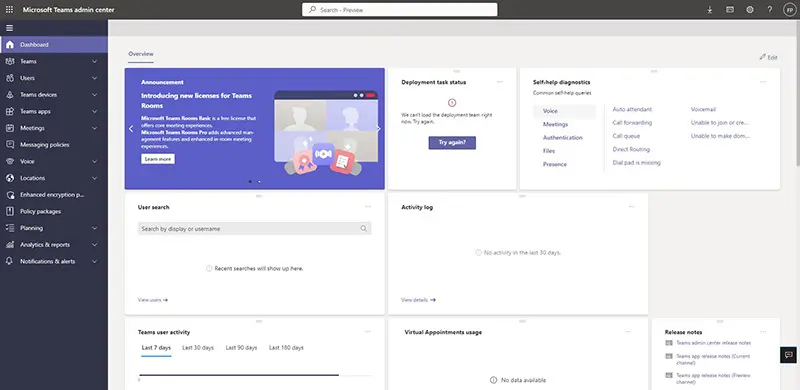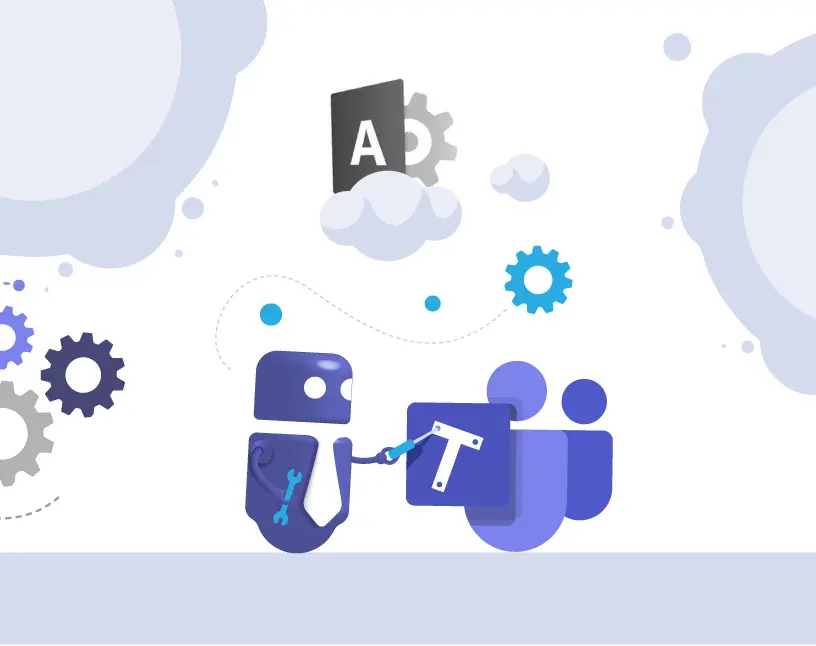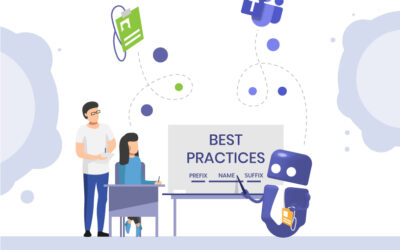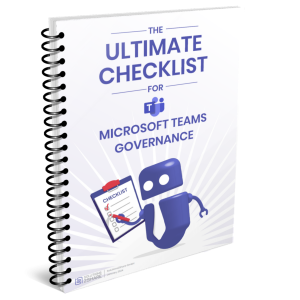Microsoft Teams Admin Center: Features, Best Practices, and Governance Tools
What challenges do IT admins face with Microsoft Teams Admin Center?
Microsoft Teams adoption usually starts small, but as more employees use it, complexity quickly increases. IT admins suddenly find themselves dealing with:
- Scattered and confusing policies.
- Unclear or misassigned admin roles.
- Guest accounts that are not monitored.
- Devices and apps that are difficult to manage.
This often results in wasted time, inconsistent governance, and rising compliance risks. To avoid these pitfalls, admins need to understand how to get the most out of the Microsoft Teams Admin Center. Let Teams Manager help you with this.
What is the Microsoft Teams Admin Center?

The Microsoft Teams Admin Center is the central dashboard for IT administrators to configure, secure, and monitor Teams. It enables organizations to:
- Manage users and groups.
- Assign and adjust admin roles.
- Define and enforce policies for meetings, messaging, and apps.
- Configure and monitor Teams-certified devices.
- Control and audit guest access.
- Track service health and call quality.
It provides the foundation for Teams governance, but using it effectively requires careful planning.
Which problems often occur in practice?
Despite its wide range of features, the Admin Center often creates challenges in real-world use:
- Unclear role assignments: Admins either have too much or too little access, leading to misconfigurations.
- Overlapping policies: Multiple settings contradict each other, confusing users.
- Guest access risks: External users remain active without review, exposing sensitive data.
- Neglected device management: Phones, headsets, and Teams Rooms are not updated regularly.
These problems slow down IT teams, reduce efficiency, and create compliance gaps.
How to use Microsoft Teams Admin Center effectively
Here are best practices that every IT admin should follow:
1. Define admin roles clearly
Assign roles based on responsibilities. For example, only staff responsible for devices should receive the Teams Device Administrator role.
2. Standardize policies
Create a consistent set of policies for messaging, meetings, and apps to reduce confusion.
3. Review guest access regularly
Audit external users every few months and remove accounts that are no longer needed.
4. Monitor device health
Use the Admin Center to keep an eye on devices and push updates to prevent performance issues.
5. Track call quality
The Call Quality Dashboard helps identify and solve network or audio issues before they spread.
📋 Checklist: 5 steps to maintain control
- Are admin roles assigned correctly?
- Do policies align across the organization?
- Is guest access monitored?
- Are devices tracked and updated?
- Is call quality reviewed regularly?
If you answered “yes” to all five, your Teams environment is in good shape. If not, improvements are needed.
What admin roles exist in Microsoft Teams?
Microsoft Teams offers several admin roles, each with different permissions:
| Role | Responsibilities | Limitations |
|---|---|---|
| Teams Administrator | Full management of Teams settings, policies, and users. | Broadest role; risky if assigned too widely. |
| Teams Communications Administrator | Manages voice, calling, and conferencing settings. | No access to apps or general Teams settings. |
| Teams Communications Support Engineer | Troubleshoots call and meeting issues using diagnostic tools. | Limited to support functions. |
| Teams Device Administrator | Manages Teams-certified devices and peripherals. | No access to users or policies. |
Assigning the right role ensures admins only have the access they need, reducing risks.
What are the limitations of the Admin Center?
The Admin Center is powerful, but it has clear limitations:
- No automated team creation: Requests must be handled manually.
- No lifecycle management: Inactive teams and guests are not archived automatically.
- Limited templates: Few options for standardized team setups.
- Weak reporting: No full visibility into usage, compliance, or sprawl.
For these reasons, many organizations complement it with governance tools.
How Teams Manager extends governance beyond the Admin Center
Teams Manager is designed to fill the gaps that the Admin Center leaves open:
- Team templates: Predefined structures for projects, departments, or customers.
- Naming conventions: Automatically applied to every new team.
- Approval workflows: Control who can create new teams.
- Lifecycle management: Archive or delete inactive teams automatically.
- Guest access review: Regular checks to ensure external accounts are still needed.
With Teams Manager, IT not only defines governance rules but also enforces them automatically.
Download Teams Manager directly in the Teams app store!
FAQs about Microsoft Teams Admin Center
It depends on responsibilities. A Teams Administrator has full control, while Device Administrators or Communications Admins cover more specific areas.
The Admin Center allows policy creation, but enforcing them across all teams is easier with Teams Manager.
No. Inactive teams and external users remain unless manually removed. Teams Manager automates this process.
Conclusion: Why combine Admin Center with governance tools
The Microsoft Teams Admin Center is a must-have for IT administrators. It provides the essential foundation for managing users, roles, and policies.
But on its own, it lacks automation, lifecycle control, and advanced reporting. By combining the Admin Center with Teams Manager, organizations gain a complete governance solution that saves time, ensures compliance, and scales with business needs.
👉 Ready to extend your Microsoft Teams governance?
Book a free Teams Manager demo today and see how to reduce admin workload while keeping Teams under control.

CEO and Governance Expert at Solutions2Share
Christian Groß is a Microsoft Teams governance expert from the very beginning. Over the past 6 years, he has developed 6 Teams apps, founded Solutions2Share, and launched the German-speaking Microsoft 365 conference in Mainz, Germany.
He regularly speaks at international M365 events and supports IT leaders in building scalable governance strategies.







